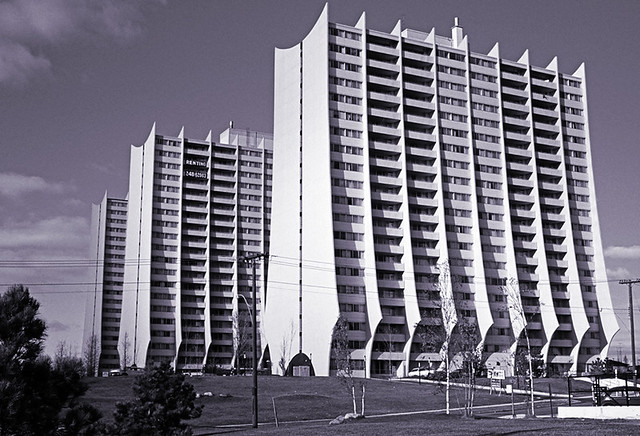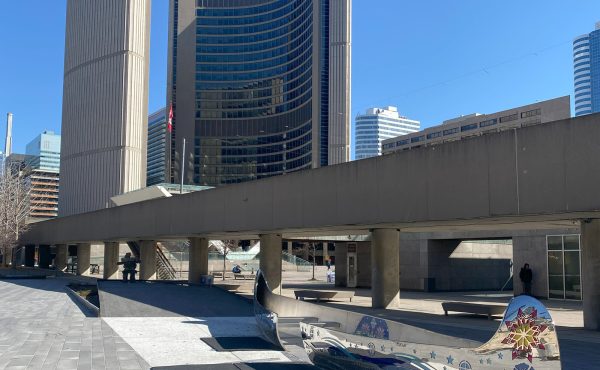
Here’s a quote from “Proposals for a New Plan for Toronto”, published in 1966 for public discussion at the Toronto Planning Board.
A choice must now be made as to how this region will grow. Will it grow haphazardly with a continuously increasing reliance on automobiles, or can a pattern of orderly growth be established, with development focused on mass transit so that reliance on cars is reduced?
If houses, shopping and industry are spread out over wide areas more travel will be needed, public transit will be uneconomic and people will be forced to use their cars to get around. Traffic congestion will be severe and life in the city will be under the tyranny of the automobile. This situation would be cause enough to question unlimited sprawl. But there are many other reasons. The greater the spread, the more people are immersed in it, divorced from the countryside and the city center alike. New highways and services have to be built through the existing city to accommodate the sprawling growth. This is difficult, costly and unsatisfactory; inevitably expedient decisions are made in response to urgent needs, resulting in a patch-work of compromises …
This fact is being recognized by the focusing of development around subway stations. In the region the equivalent to the subway would be high speed long distance mass transit train services, such as a commuter train system.
(Quoted in Mary Soderstrom, The Walkable City, p. 73)
Sound familiar? As the French say, plus ça change, plus c’est la même chose. It’s remarkable to think that people have been aware of the problems of sprawl pretty much since it started, but it still happened. And the same solution — building up development around mass transit stops — is still being proposed and in many places only just starting to be implemented.
Still, this kind of insight did help — thanks in part to this kind of foresight, Toronto’s inner suburbs are in fact more densely populated than most suburbs, in part because of the “tower neighbourhoods” built at key junctions. For all their many flaws, these dense nodes of population are what would have made the Transit City light-rail plan a viable, heavily-used project if it had not been cancelled.




4 comments
can someone verify whether or not TC is cancelled? i know bob fo said it was, but he says a lot of things
Chin > For the current situation, check out Ed Keenan’s discussion of the Transit City question:
http://www.thegridto.com/city/politics/come-back-transit-city-all-is-forgiven/
It was, and is, a good thing that money was not wasted on any of the proposed schemes. Until Toronto gets serious about its role in job sprawl it would be a waste of money. Residential density is far less important than employment density in making public transit viable. Read the report, Making the Most of Transit. It does a good job shedding light on this.
http://www.ppic.org/content/pubs/report/R_211JKR.pdf
There were a series of regional plans proposed for the GTA between the fifties and the eighties. Depressing reading. They were all pretty consistent and anti-sprawl, but none of them were followed through outside of Metro Toronto. (That’s why there are highrises like those Jane Street towers in the pic, to the borders of Toronto, and a mishmash beyond that.)
The real history of sprawl goes back to the beginnings of the car, though. Within 10 years of widespread car ownership there were car-oriented suburbs like those on the near part of Long Island in NY. And then.. there were traffic jams. And more highways. And more traffic jams.